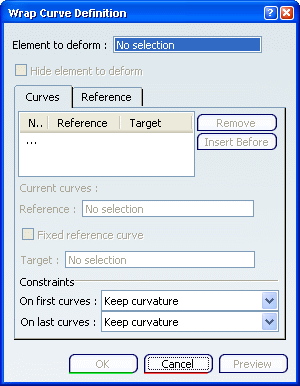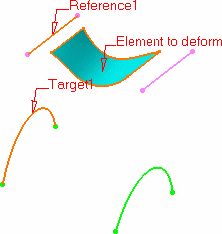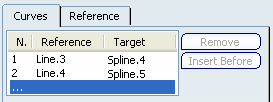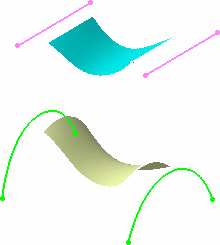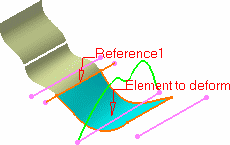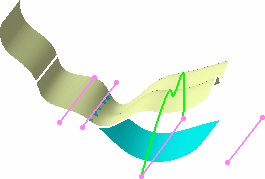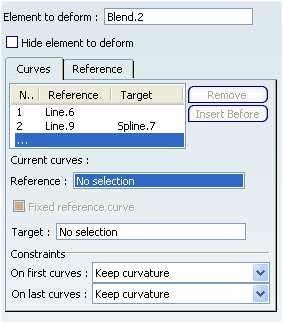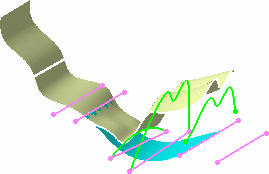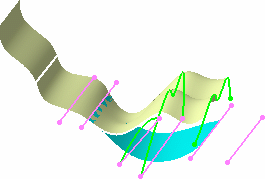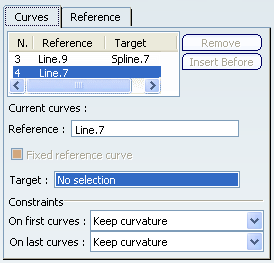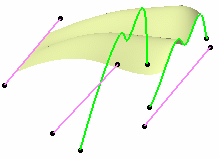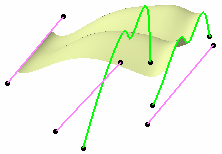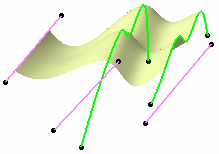Deforming Elements According to Curve Wrapping | |||||
|
| ||||
Deform the Element
You can deform element by defining reference curve and target curve.
| Important: The reference and target curves can be multi-cells. Joined, blended, or matched curves, for example, can be used as reference or target curves. |
Warning:
|
![]()
Deform Using a Fixed Reference
Sometimes, you need to create a deformed element in relation to another element, when you want to match two elements for example. The curve wrapping capability lets you fix an element that can be used by another one, thus allowing you to retain a connection between elements while deforming the initial surface.
![]()
Edit a Deformed Element
You can edit the deformed element.
The deformed surface can be modified by:
- Inserting curve pairs
- Removing curve pairs
- Fixing reference curves
- Adding constraints onto the first and last curve pairs.
| Tip: When the spine or the first reference/target curve (default spine) is too short in relation to the corresponding surface's bounding box, the curve is extrapolated according to this bounding box. Then other reference/target curves are extrapolated as well, in relation to this extrapolated spine. |
